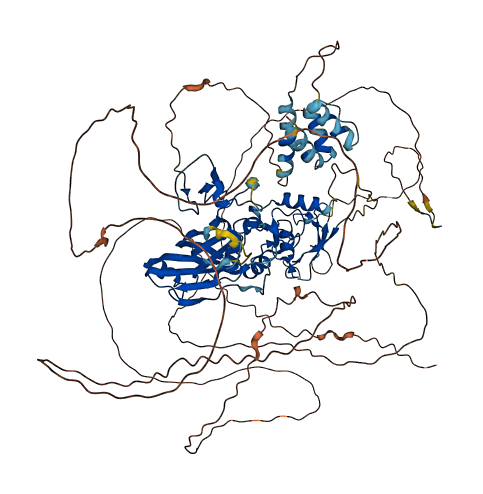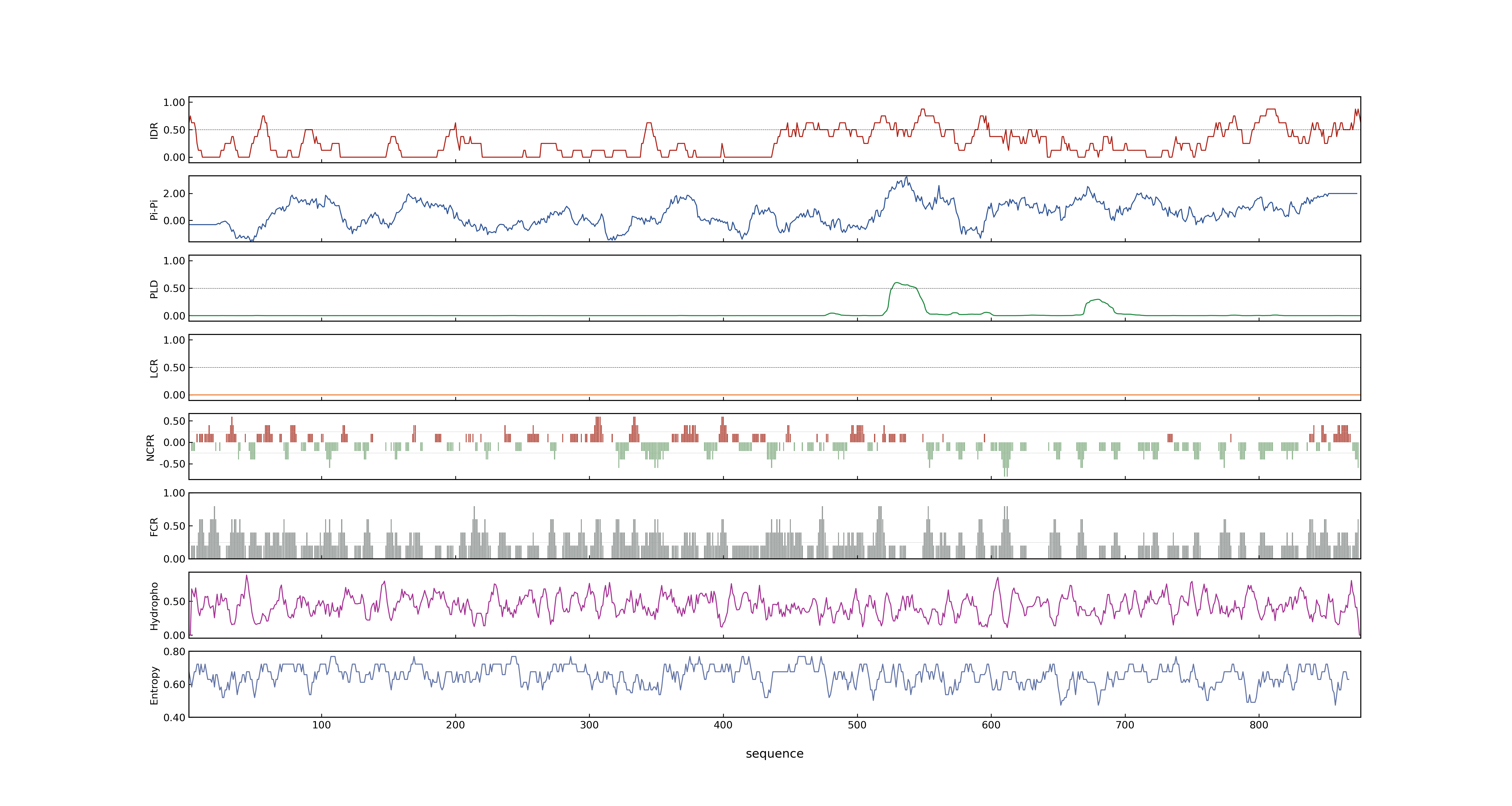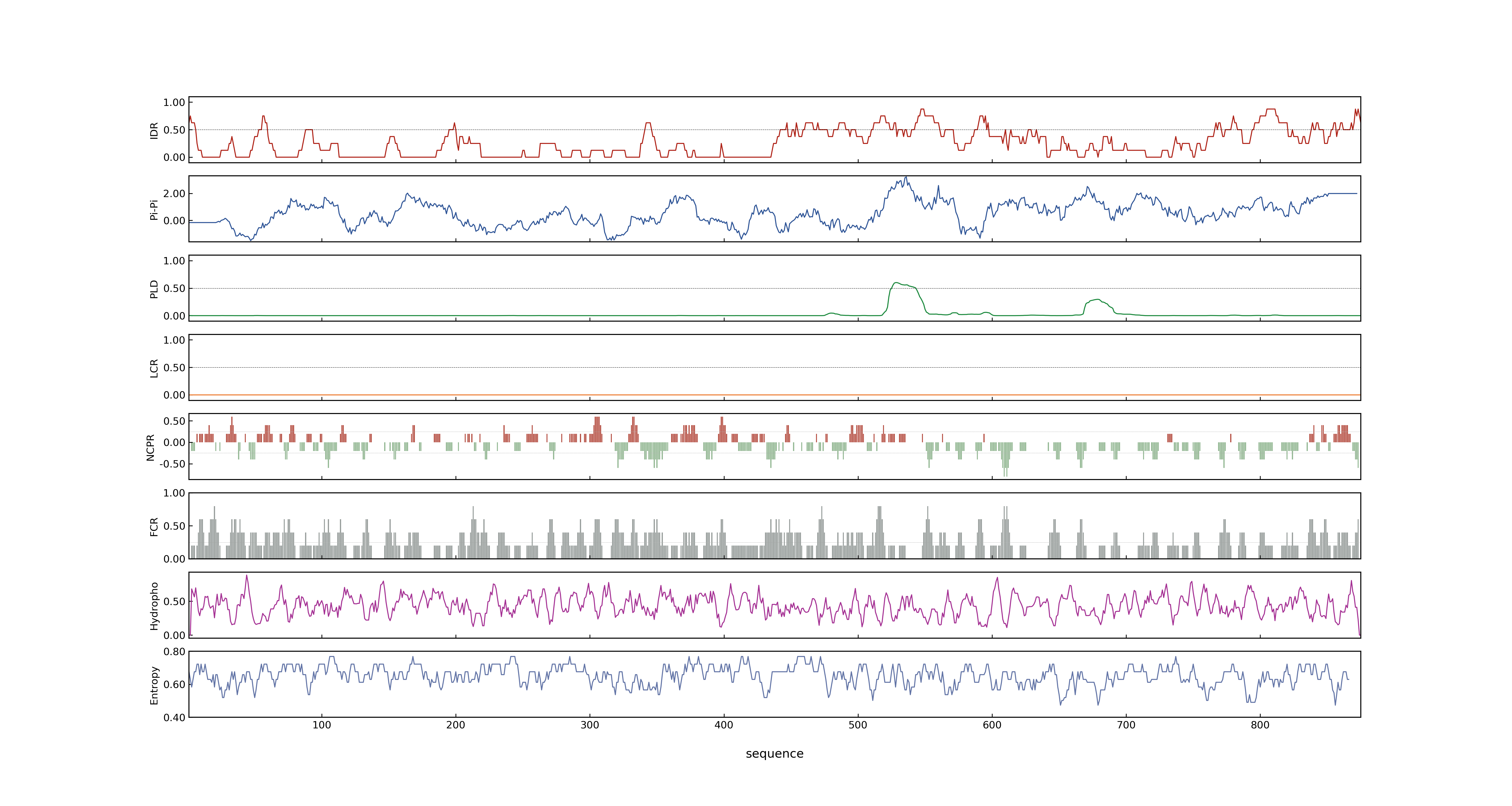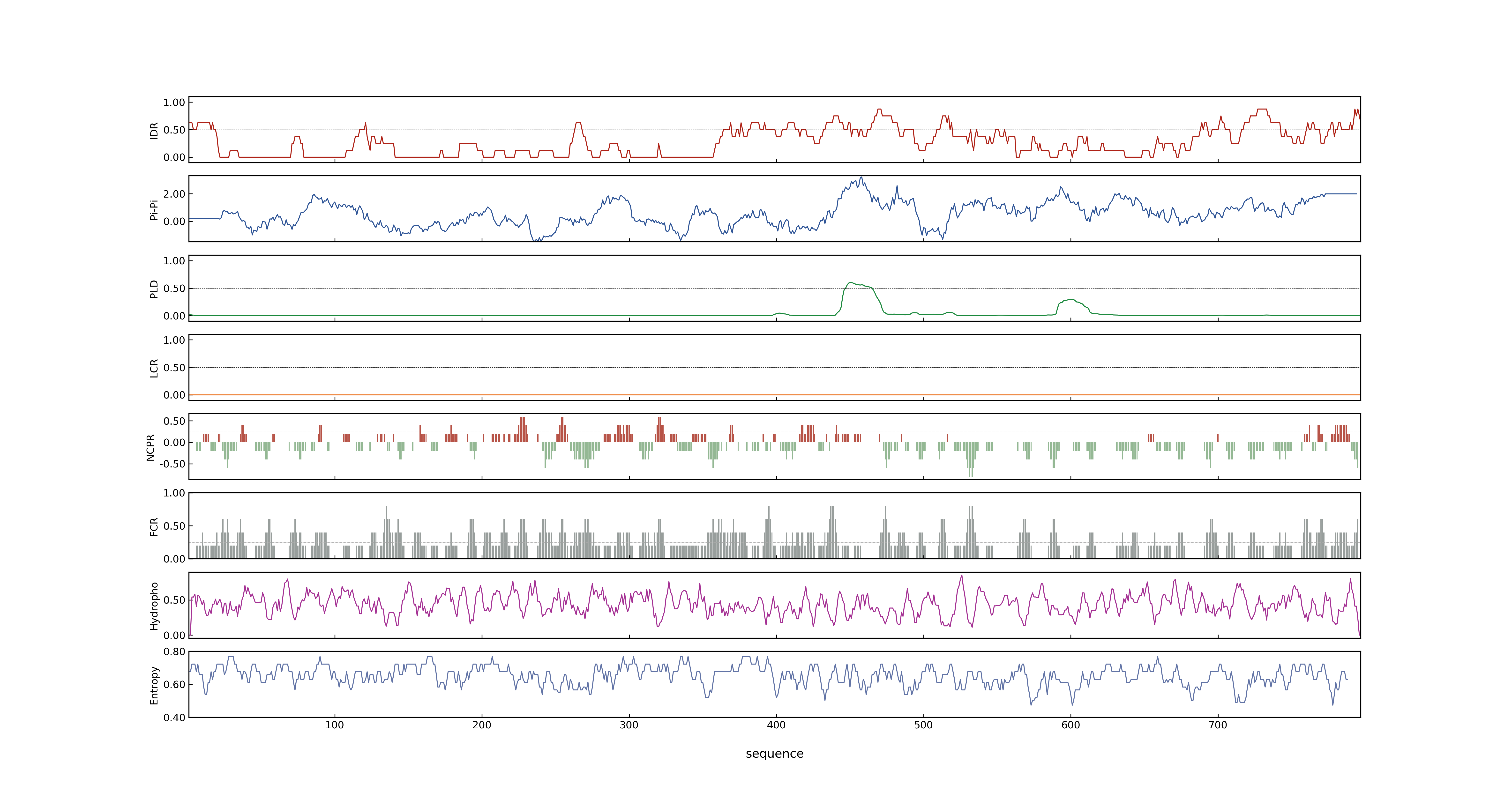- Information
- Symbol: OsSIZ1
- MSU: LOC_Os05g03430
- RAPdb: Os05g0125000
- PSP score
- LOC_Os05g03430.1: 0.9091
- LOC_Os05g03430.2: 0.9604
- LOC_Os05g03430.3: 0.9366
- PLAAC score
- LOC_Os05g03430.1: 0
- LOC_Os05g03430.2: 0
- LOC_Os05g03430.3: 0
- pLDDT score
- 61.5
- Protein Structure from AlphaFold and UniProt
- MolPhase score
- LOC_Os05g03430.1: 0.96767407
- LOC_Os05g03430.2: 0.98837423
- LOC_Os05g03430.3: 0.97988474
- MolPhase Result
- Publication
- OsSIZ1 Regulates the Vegetative Growth and Reproductive Development in Rice, 2010, Plant Molecular Biology Reporter.
- Functional characterization of the SIZ/PIAS-type SUMO E3 ligases, OsSIZ1 and OsSIZ2 in rice, 2010, Plant Cell Environ.
- Rice SIZ1, a SUMO E3 ligase, controls spikelet fertility through regulation of anther dehiscence, 2011, New Phytol.
- OsSIZ1, a SUMO E3 Ligase Gene, is Involved in the Regulation of the Responses to Phosphate and Nitrogen in Rice., 2015, Plant Cell Physiol.
- Overexpression of the Rice SUMO E3 Ligase Gene OsSIZ1 in Cotton Enhances Drought and Heat Tolerance, and Substantially Improves Fiber Yields in the Field under Reduced Irrigation and Rainfed Conditions., 2017, Plant Cell Physiol.
- Genbank accession number
- Key message
- The results showed that the mutant Ossiz1 exhibited the significant changes in several growth and developmental parameters, including primary root length, adventitious root number, plant height, leaf and panicle length, flower formation, and seed-setting rate compared with wild type
- The function in the vegetative growth and reproductive development in rice was investigated using OsSIZ1 mutants containing a T-DNA insertion
- OsSIZ1 Regulates the Vegetative Growth and Reproductive Development in Rice
- In addition, ABA-hypersensitivity of siz1-2 seed germination was partially suppressed by OsSIZ1 and OsSIZ2
- Taking together these results indicate that OsSIZ1 plays an important role in regulating growth and development in rice
- Pi concentration in the xylem sap of ossiz1 mutants was significantly higher than that of the wild type under a Pi-sufficient growth regime
- OsSIZ1 is constitutively expressed throughout the vegetative and reproductive growth of rice, with stronger promoter activities in vascular bundles of culms
- ossiz1 mutants had shorter primary roots and adventitious roots than wild-type plants, suggesting that OsSIZ1 is associated with the regulation of root system architecture
- Here, we investigated the expression profile of OsSIZ1 in rice using quantitative reverse transcription-PCR (qRT-PCR) and pOsSIZ1-GUS transgenic plants, and the function of OsSIZ1 in the responses to phosphate and nitrogen using a reverse genetics approach
- Total nitrogen (N) concentrations in the most detected tissues of ossiz1 mutants were significantly increased compared with the wild type
- Total phosphorus (P) and phosphate (Pi) concentrations in both roots and shoots of ossiz1 mutants were significantly increased irrespective of Pi supply conditions compared with the wild type
- Analysis of mineral contents in ossiz1 mutants indicated that OsSIZ1 functions specifically in Pi and N responses, not those of other nutrients examined, in rice
- Further, qRT-PCR analyses revealed that the expression of multiple genes involved in Pi starvation signaling and N transport and assimilation were altered in ossiz1 mutants
- Together, these results suggested that OsSIZ1 may act as a regulator of the Pi (N)-dependent responses in rice
- We report here that overexpression of OsSIZ1 in cotton results in higher net photosynthesis and better growth than wild-type cotton under drought and thermal stresses in growth chamber and greenhouse conditions
- Overexpression of the Rice SUMO E3 Ligase Gene OsSIZ1 in Cotton Enhances Drought and Heat Tolerance, and Substantially Improves Fiber Yields in the Field under Reduced Irrigation and Rainfed Conditions.
- Connection
- OsSIZ1, OsSIZ2, OsSIZ1 Regulates the Vegetative Growth and Reproductive Development in Rice, In this work, two homologous genes from rice (Oryza sativa) were isolated and designated as OsSIZ1 and OsSIZ2 based on amino acid sequence homology to AtSIZ1 and their phylogenetic relationship
- OsSIZ1, OsSIZ2, Functional characterization of the SIZ/PIAS-type SUMO E3 ligases, OsSIZ1 and OsSIZ2 in rice, Here, we report the isolation and molecular characterization of Oryza sativa SIZ1 (OsSIZ1) and SIZ2 (OsSIZ2), rice homologs of Arabidopsis SIZ1
- OsSIZ1, OsSIZ2, Functional characterization of the SIZ/PIAS-type SUMO E3 ligases, OsSIZ1 and OsSIZ2 in rice, The expression of OsSIZ1 and OsSIZ2 in siz1-2 Arabidopsis plants partially complemented the morphological mutant phenotype and enhanced levels of SUMO conjugates under heat shock conditions
- OsSIZ1, OsSIZ2, Functional characterization of the SIZ/PIAS-type SUMO E3 ligases, OsSIZ1 and OsSIZ2 in rice, In addition, ABA-hypersensitivity of siz1-2 seed germination was partially suppressed by OsSIZ1 and OsSIZ2
- OsSIZ1, OsSIZ2, Functional characterization of the SIZ/PIAS-type SUMO E3 ligases, OsSIZ1 and OsSIZ2 in rice, Functional characterization of the SIZ/PIAS-type SUMO E3 ligases, OsSIZ1 and OsSIZ2 in rice
- OsSIZ1, OsSIZ2, Functional characterization of the SIZ/PIAS-type SUMO E3 ligases, OsSIZ1 and OsSIZ2 in rice, The results suggest that rice SIZ1 and SIZ2 are able to functionally complement Arabidopsis SIZ1 in the SUMO conjugation pathway
- OsLPR3, OsSIZ1, Identification and expression analysis of OsLPR family revealed the potential roles of OsLPR3 and 5 in maintaining phosphate homeostasis in rice., Further, the expression levels of OsLPR3 and 5 were either attenuated in ossiz1 and ospho2 or augmented in rice overexpressing OsSPX1
- OsSIZ1, OsSIZ2, OsSIZ2 exerts regulatory influences on the developmental responses and phosphate homeostasis in rice., Whether paralogs OsSIZ1 and OsSIZ2 are functionally redundant or the latter regulates these traits independent of the former is not known
- OsSIZ1, OsSIZ2, OsSIZ2 exerts regulatory influences on the developmental responses and phosphate homeostasis in rice., Further, attenuation in the expression levels of OsSIZ2 in the roots of ossiz1 and relatively similar trend of the effects of the mutation in OsSIZ1 and OsSIZ2 on growth and development and total P concentration in different tissues suggested a prevalence of partial functional redundancy between these paralogs
Prev Next



